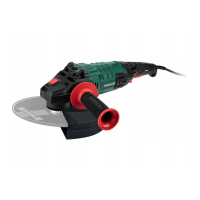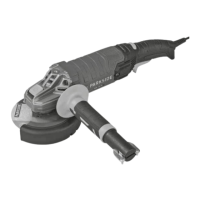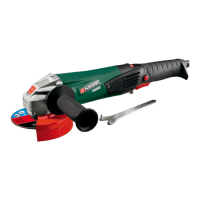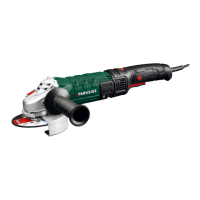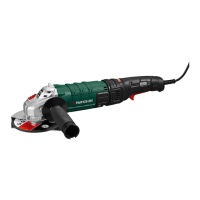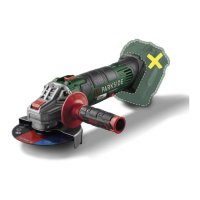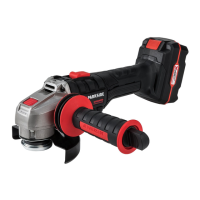PWS 230 D4
■ 12
│
GB
│
IE
Maintenance and cleaning
WARNING! RISK OF INJURY! Switch
the appliance off and remove the
power plug before starting any
work on the appliance.
■ Do not use any sharp objects to clean the
appliance. Never permit liquids to enter
inside the appliance. Otherwise the appliance
could be damaged.
■ The carbon brushes should only be replaced by
the service centre or an authorised specialist
workshop.
Apart from this, the appliance is mainte-
nance-free.
■ Clean the appliance regularly, preferably imme-
diately after completion of the work.
■ Clean the housing with a dry cloth – do NOT
use petrol, solvents or cleaners which can attack
the plastic.
■ A vacuum cleaner is required for thorough
cleaning of the appliance.
■ Ventilation openings must never be obstructed.
■ Remove any sanding dust stuck to the appliance
with a brush.
NOTE
► Replacement parts not listed (such as carbon
brushes, switch) can be ordered via our
service hotline.
Cleaning the dust filters
The appliance has two dust filters , one on each
side. Check and clean the two dust filters regu-
larly. Proceed as follows (see fig. G):
♦ Remove the screw
using a standard Phillips
screwdriver (not in package contents).
♦ Remove the dust filter
. Inspect it and clean if
necessary.
♦ Reassemble the appliance in the reverse order.
♦ Proceed in the same manner on the other side.
Disposal
The packaging consists of environ-
mentally friendly material. It can be
disposed of in local recycling
containers.
Do not dispose of power tools in
the normal domestic waste!
European Directive 2012/19/EU
requires that worn-out power tools are
collected separately and recycled in an environ-
mentally compatible manner.
Your local community or municipal authorities can
provide information on how to dispose of the
worn-out appliance.
Dispose of the packaging in an envi-
ronmentally friendly manner. Note
the labelling on the packaging and
separate the packaging material
components for disposal if necessary. The pack-
aging material is labelled with abbreviations (a)
and numbers (b) with the following meanings:
1–7: plastics, 20–22: paper and cardboard,
80–98: composites.
Your local community or municipal
authorities can provide information on
how to dispose of the worn-out product.
The product is recyclable, subject to
extended producer responsibility and is
collected separately.
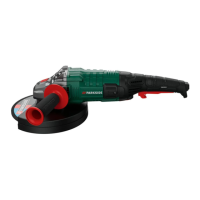
